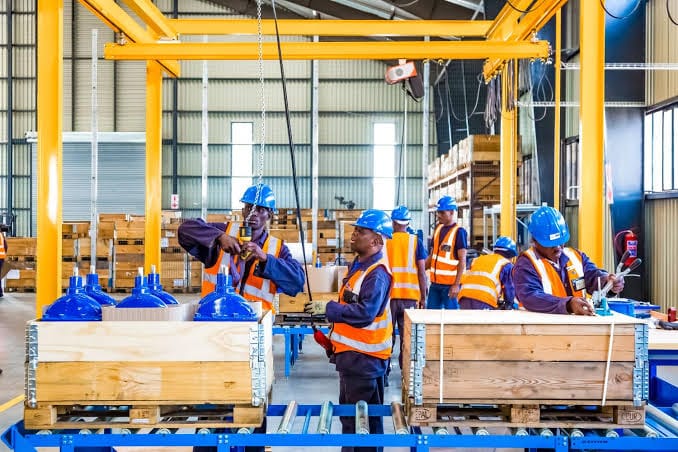In Summary
- Across sub-Saharan Africa, agriculture still employs over 50% of the population, acting as a primary driver of job stability.
- Countries with low unemployment rates often combine traditional sectors with emerging industries to sustain livelihoods.
- The International Labour Organization estimates that up to 70% of jobs in these economies are informal.
Deep Dive!!
Lagos, Nigeria – As Africa’s economic landscape evolves, several countries manage to keep official unemployment rates at some of the lowest levels globally. In 2025, nations like Niger, Burundi, and Chad report figures below 1%, with agriculture, livestock, and resource-based sectors absorbing the majority of their workforce.
These low rates are not solely a product of industrial expansion; they are deeply rooted in economic structures where subsistence farming, artisanal mining, and cross-border trade form the backbone of daily livelihoods. For example, Côte d’Ivoire’s cocoa industry and Togo’s strategic port trade generate thousands of direct and indirect jobs. At the same time, Ethiopia’s manufacturing parks and infrastructure projects create formal employment opportunities for its growing youth population.
According to the African Development Bank, sub-Saharan Africa’s labour force is set to expand by more than 20 million people annually over the next decade. In countries with low unemployment, this growth is being met with a combination of agricultural modernization, infrastructure development, and targeted vocational training.
In this report, we present the Top 10 African countries with the lowest unemployment rates in 2025, exploring the industries, trade patterns, and labour dynamics that underpin their economic resilience.
10. Ethiopia

Ethiopia’s unemployment rate was around 3.5% in 2025. The economy is anchored by agriculture, employing roughly 70% of the population and producing staples like teff, maize, and coffee for domestic use and export. Industrialization efforts through government-supported parks in Hawassa, Bole Lemi, and Kombolcha have attracted textile and leather manufacturers supplying major global brands.
The country’s road and rail projects, including the Addis-Djibouti railway, improve market access for both rural farmers and urban businesses. With an estimated two million young people entering the labour market annually, Ethiopia continues to focus on vocational training and entrepreneurship to meet employment demand.
9. Sierra Leone

At about 3.1%, Sierra Leone’s low unemployment rate reflects strong participation in agriculture, mining, and commerce. Rice remains the staple crop, supported by irrigation schemes in regions like Bo and Bombali. Artisanal and small-scale mining of diamonds and gold provides income for thousands, alongside large-scale iron ore operations.
Freetown’s growing urban economy hosts jobs in retail, hospitality, education, and construction. Government investment in energy projects, including mini-grids and hydroelectric power, supports local manufacturing and processing industries. The country’s coastline also supports a small but active fishing industry, contributing to both food supply and export revenue.
8. Liberia

Liberia’s unemployment rate stands at about 2.9% in 2025, with livelihoods rooted in agriculture, mining, and trade. The nation is a leading exporter of natural rubber, while rice, cassava, cocoa, and oil palm farming employ a large share of the rural workforce. Gold and iron ore mining continue to attract foreign investment, particularly in Bong, Nimba, and Grand Cape Mount counties.
Monrovia’s service sector banking, telecommunications, and shipping are steadily expanding. Fishing communities along the Atlantic coast supply both domestic markets and exports. Ongoing road rehabilitation and port upgrades are improving logistics, creating jobs in construction and transportation.
7. Guinea-Bissau

With unemployment at roughly 2.6%, Guinea-Bissau’s economy is driven by agriculture, fishing, and small-scale trade. Cashew nuts are the primary export, employing over two-thirds of the rural population during harvest season. Rice and groundnut cultivation, combined with artisanal fishing along the coast, provide steady income sources.
The Port of Bissau is central to both domestic and regional trade, while new investments in cold storage and processing facilities aim to add value to agricultural and fishery products. Small manufacturing in food processing, carpentry, and textiles supplements rural employment.
6. Côte d’Ivoire

Côte d’Ivoire records unemployment of around 2.3% in 2025, underpinned by a strong and diverse economy. The country is the world’s largest cocoa producer and a major exporter of coffee, cashew nuts, and palm oil. Abidjan’s urban economy thrives on construction, banking, telecommunications, and logistics, while industrial processing of cocoa and cashews is adding skilled manufacturing roles.
Major infrastructure projects, including the Abidjan Metro and new highways, are boosting employment in construction and engineering. The Port of Abidjan remains a regional trade hub, supporting thousands of jobs in transport and warehousing.
5. Seychelles

Seychelles maintains unemployment at about 2.0% thanks to a thriving tourism industry, which supports hotels, restaurants, tour operations, and marine recreation services. The fisheries sector, particularly tuna fishing and processing, is another key employer, alongside artisanal fishing for local consumption.
Government policies encourage training in hospitality, maritime navigation, and eco-tourism, ensuring a steady supply of skilled workers. The country’s small, highly literate population allows for targeted workforce placement. Seasonal tourism peaks bring temporary boosts in entertainment, catering, and transport services.
4. Togo

Togo’s unemployment rate is around 1.9%, with agriculture, trade, and logistics as leading employers. Cash crops like cotton, coffee, and cocoa are central to rural livelihoods, while maize and cassava feed domestic markets. Lomé’s strategic port position makes Togo a trade gateway for landlocked neighbors, generating employment in cargo handling, customs, and warehousing.
Industrial zones near the capital support light manufacturing, cement production, and food processing. The government’s investment in the Lomé–Ouagadougou transport corridor has strengthened cross-border trade and created new logistics jobs.
3. Chad

Chad’s unemployment rate is about 1.1%, supported by traditional livelihoods and resource industries. Livestock herding cattle, camels, and goats employs much of the rural population, alongside staple crop farming of millet, sorghum, and maize. Fishing in Lake Chad sustains communities in the west, while oil production in the south drives formal employment in extraction and refining. Investments in irrigation and solar-powered water pumps are improving agricultural productivity, while the N’Djamena industrial area supports jobs in food processing and textiles.
2. Burundi

Burundi’s unemployment rate is approximately 0.93%. Agriculture is the mainstay, with coffee and tea plantations providing seasonal employment and export revenue. Subsistence farming of bananas, beans, and maize is widespread, and cooperatives help farmers pool resources and access markets. Public works programs have expanded road networks and electricity access, creating construction jobs and facilitating small-scale manufacturing. Local markets in Gitega and Bujumbura are hubs for trade in agricultural produce, textiles, and handicrafts.
1. Niger

Niger’s unemployment rate in 2025 is about 0.4%, the lowest in Africa. Agriculture and livestock farming dominate, with millet, sorghum, cowpeas, and onions as key crops. Seasonal migration patterns see workers travel within and beyond Niger for employment during planting and harvest cycles. Oil production, particularly from the Agadem field, and the completion of new pipelines have created skilled jobs in energy and logistics. Livestock trade across the Sahel and export of onions to West African markets add to the country’s economic activity. Rural development projects focusing on irrigation and market access are further strengthening employment prospects.
https://www.africanexponent.com/top-10-african-countries-with-the-lowest-unemployment-rates-in-2025/


